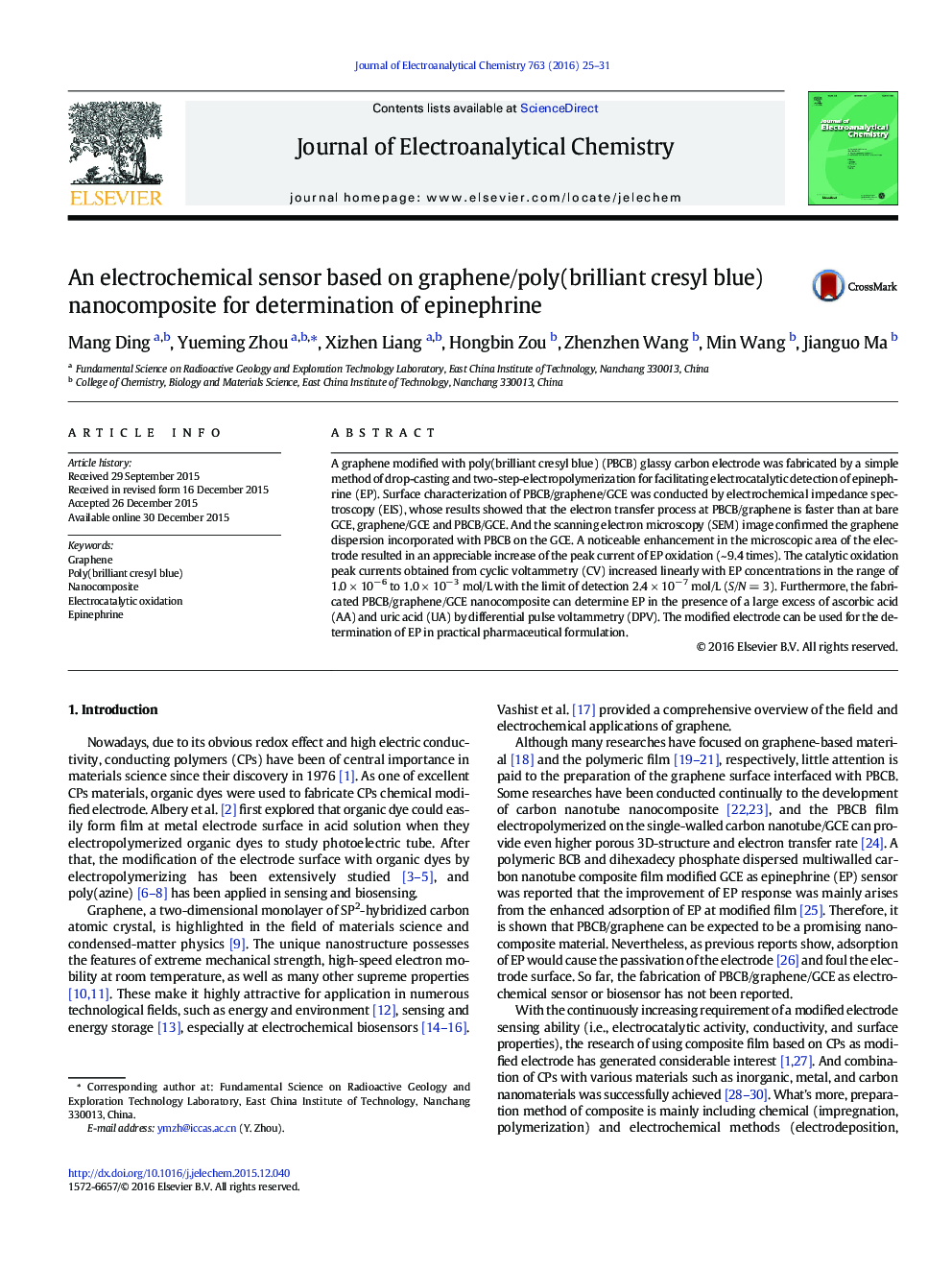| Article ID | Journal | Published Year | Pages | File Type |
|---|---|---|---|---|
| 218104 | Journal of Electroanalytical Chemistry | 2016 | 7 Pages |
A graphene modified with poly(brilliant cresyl blue) (PBCB) glassy carbon electrode was fabricated by a simple method of drop-casting and two-step-electropolymerization for facilitating electrocatalytic detection of epinephrine (EP). Surface characterization of PBCB/graphene/GCE was conducted by electrochemical impedance spectroscopy (EIS), whose results showed that the electron transfer process at PBCB/graphene is faster than at bare GCE, graphene/GCE and PBCB/GCE. And the scanning electron microscopy (SEM) image confirmed the graphene dispersion incorporated with PBCB on the GCE. A noticeable enhancement in the microscopic area of the electrode resulted in an appreciable increase of the peak current of EP oxidation (~ 9.4 times). The catalytic oxidation peak currents obtained from cyclic voltammetry (CV) increased linearly with EP concentrations in the range of 1.0 × 10− 6 to 1.0 × 10− 3 mol/L with the limit of detection 2.4 × 10− 7 mol/L (S/N = 3). Furthermore, the fabricated PBCB/graphene/GCE nanocomposite can determine EP in the presence of a large excess of ascorbic acid (AA) and uric acid (UA) by differential pulse voltammetry (DPV). The modified electrode can be used for the determination of EP in practical pharmaceutical formulation.
